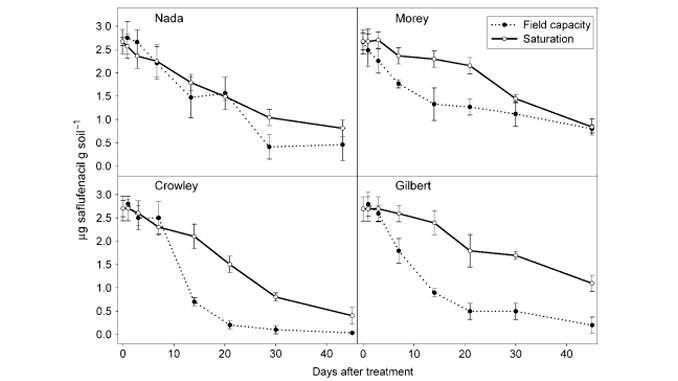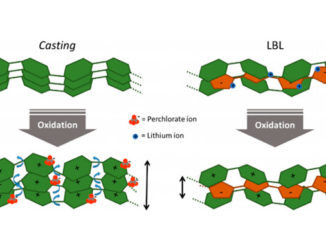
Writers: Edinalvo R Camargo; Scott A Senseman; Richard L Haney; John B Guice; and Garry N McCauley
Keywords: accelerated solvent extraction; field capacity; flooded; half-life; Sharpen
Abstract:
Background
Saflufenacil dissipation in soils under different moisture conditions is not available in the scientific literature. The objective of this study was to evaluate saflufenacil degradation and persistence in soils from rice regions under field capacity (non-flooded) and saturated (flooded) conditions.
Results
The accelerated solvent extraction (ASE) residue analytical method developed to conduct the study resulted in recovery greater than 80% for the combinations of soils and moisture conditions. Saflufenacil degradation was faster at field capacity for all soils, except for Morey soil. Herbicide half-life was 28.6, 15.0 and 23.1 days under field capacity treatments and 58.8, 36.9 and 79.7 under saturated conditions for Nada, Crowley and Gilbert soils respectively. A half-life no longer than 80 days was observed for the combination of soils and moisture treatments.
Conclusion
An ASE method was developed and used to extract saflufenacil from soil samples. Half-life averaged among soils was 59 and 33 days for saturated and field capacity respectively. Saflufenacil persistence in the environment was 2–3 times longer under flooded conditions for most of the soils studied. © 2013 Society of Chemical Industry
See PDF: Camargo_et_al-2013-Pest_Management_Science
DOI: 10.1002/ps.3494




